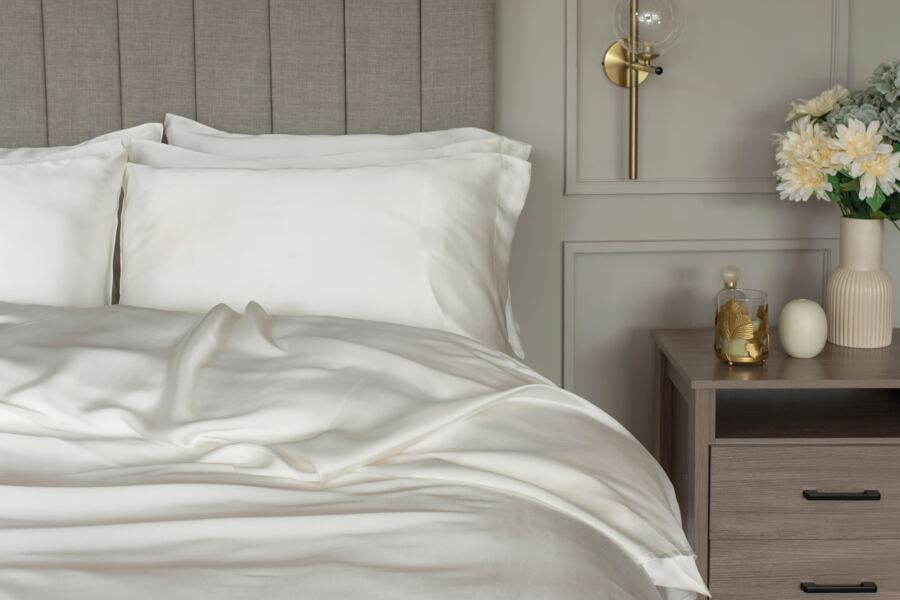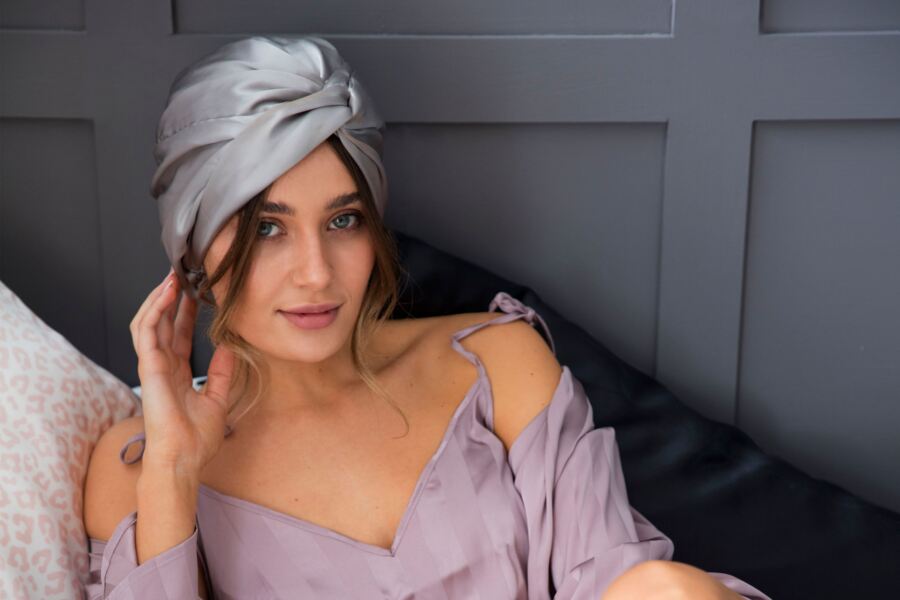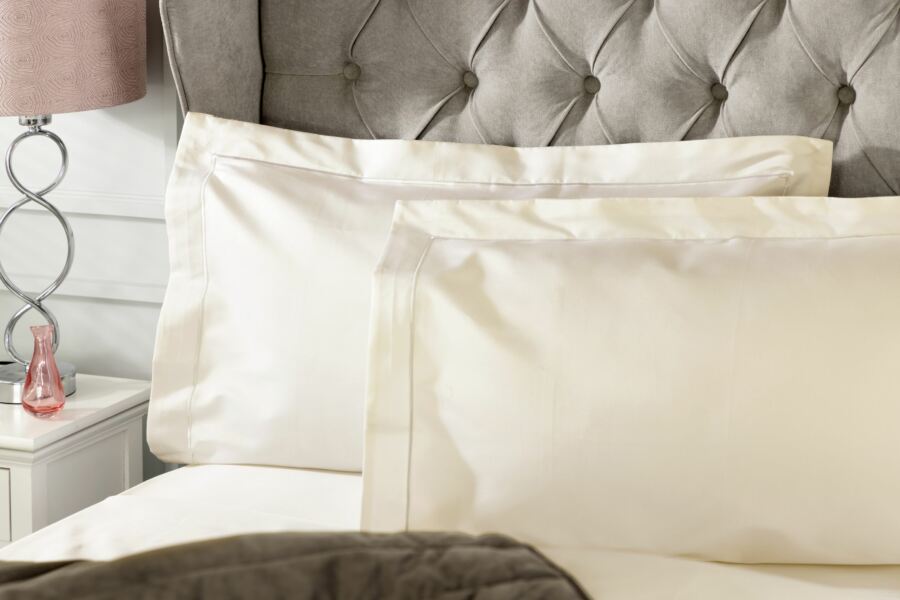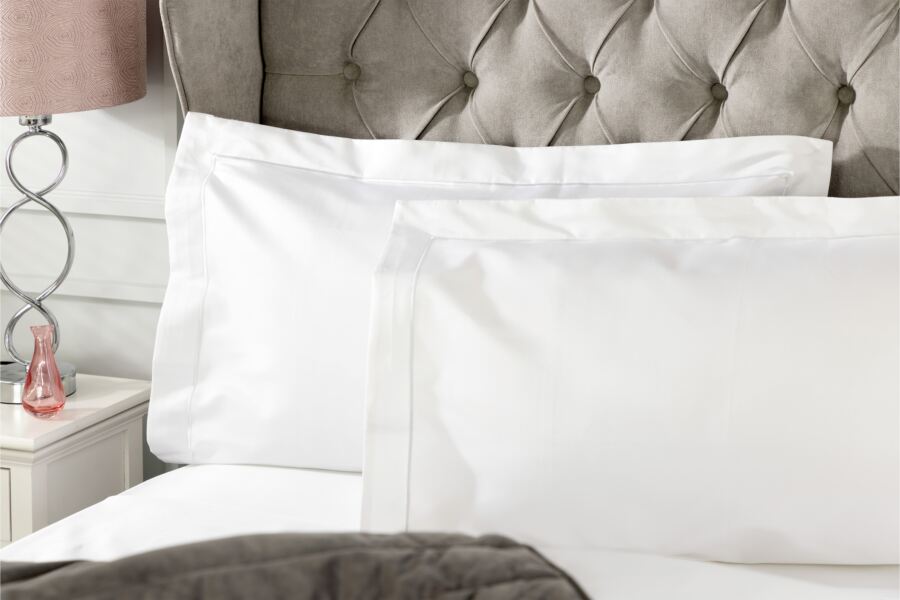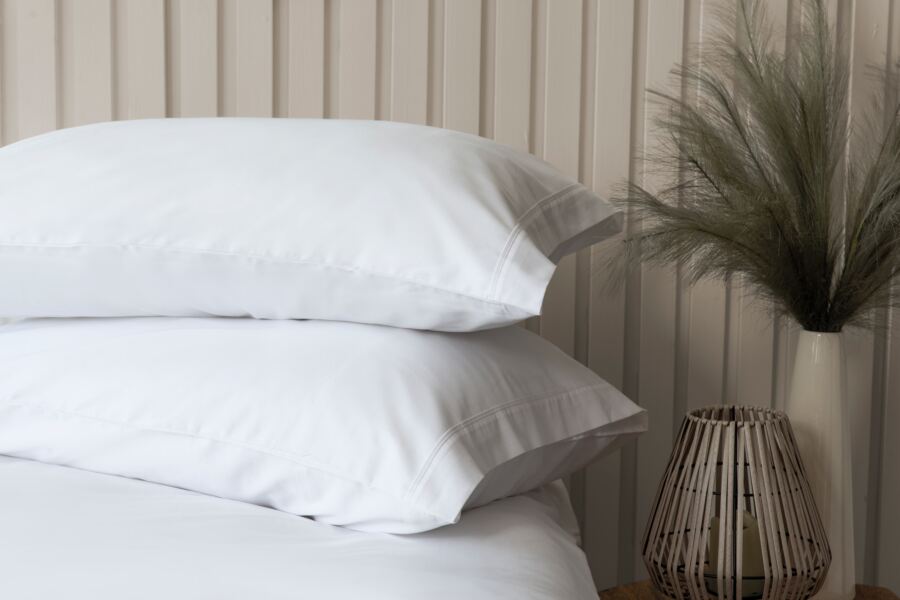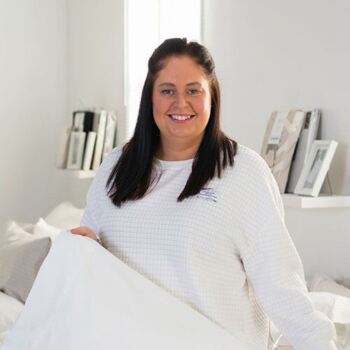Table of Contents
- How Is My Pillow Causing Wrinkles?
- What Are The Best Anti-Wrinkle Pillowcases?
- Which Pillowcase Materials Make Your Sleep Wrinkles Worse?
- How Does Your Sleeping Position Form Wrinkles?
- Other Tips To Decrease Sleep Wrinkles
- FAQs
- Final Thoughts
The short answer is yes, your pillow can cause wrinkles.
Forget expensive wrinkle prevention remedies and skin care products... As experts in the sleeping industry, we know that wrinkles are predominantly formed at night, while we sleep. So, while getting a good night's sleep with your face smushed against a rough pillow was okay when you were 25, it can cause severe, permanent sleep lines, and wrinkles as you age..
If you want to prevent sleep lines in the years to come, you should start by implementing a healthier sleep routine today. You may also be able to skip out on expensive skin treatments altogether!
In this article, we will explore why and how wrinkle formation occurs in your sleep and why your not-so-innocent pillow may be part of the problem. We will also look at the best pillowcases to use and which ones to avoid, and provide some helpful tips and tricks to maximise your beauty sleep.

How Is My Pillow Causing Wrinkles?
Your pillow is causing wrinkles due to:
-
The material of your pillowcase: The material of your pillowcase plays a significant role in how your skin "interacts" with it. Traditional cotton pillowcases (while great for things like temperature regulation and durability) can create friction that worsens skin creasing. Pillowcases made of smoother materials like silk or satin allow for less friction, reducing the risk of creases
-
How your skin makes contact with your pillow: Depending on your sleeping position, your facial skin can fold or crease against your pillow, especially if you sleep on your stomach or side. The pressure and friction break down collagen and elastin fibres in your skin, forming permanent folds, sagging, and wrinkles.
What Are The Best Anti-Wrinkle Pillowcases?
The best anti-wrinkle pillowcases put less strain on your skin while sleeping. The main thing to look out for is smoother materials that will cause less friction against your face. Silk, satin, sateen, and bamboo pillowcases are excellent options.
Silk Pillowcases
A silk pillowcase is the most effective regarding its skin benefits, particularly its anti-wrinkle properties. This material is incredibly smooth and creates hardly any friction between your face and pillowcase, helping to prevent folds.
Silk also contains active ingredients, like proteins and amino acids, that nourish skin cells. Simply touching the material can stimulate collagen production and promote healthy elastin flexibility.
It is also good at keeping skin hydrated, as it is less absorbent than other materials like cotton. This means silk absorbs less moisture from your face (whether it's natural moisture or moisture from your creams and serums), increasing the suppleness of your skin and preventing wrinkles.
We recommend a 100% Mulberry Silk Pillowcase or the Cocoonzzz Silk Pillowcase.
Satin Pillowcases
A satin pillowcase prevents wrinkles at a more affordable price than pure silk. Satin is a type of weave, usually made from synthetic fabrics, that results in the same smooth, soft texture as silk.
Much like silk, satin pillowcases limit the pulling of the skin and provide a smooth, frictionless surface to sleep on. This prevents sleeping wrinkles and permanent fine lines on your face.
Our best satin pillowcase for wrinkles provides most of the same benefits as 100% silk.
Sateen Pillowcases
Traditional cotton with thread counts in the standard 250 to 300 range is usually not recommended. However, higher-thread-count cotton, like sateen, can work well for reducing sleep lines.
With a thread count above 600, sateen makes for a supremely soft pillowcase material. It is almost as luxurious and soft as silk. Sateen also contains some of the same benefits as silk, like promoting facial hydration, as it doesn't absorb much moisture off the skin.
Additionally, sateen's smooth texture causes little to no friction. This ensures your skin stays crease-free while sleeping.
We recommend opting for a 1,000-thread count sateen cotton pillowcase - an excellent option to prevent fine lines and wrinkles.
Bamboo Pillowcases
Bamboo pillowcases are highly effective in promoting healthier, more youthful skin. In addition to being just as smooth as silk or satin, bamboo is also highly breathable, hypoallergenic, and antimicrobial. This makes it an even better option for those who also have sensitive skin.
Due to its high thread count and natural fibres, bamboo is luxuriously soft. This results in less rubbing against your skin, which usually occurs when you toss and turn in your sleep. Additionally, bamboo's breathability allows for more airflow onto the skin, ensuring you wake up looking and feeling refreshed.

Which Pillowcase Materials Make Your Sleep Wrinkles Worse?
There are a few pillowcase materials to avoid if you want to preserve your skin's youthful glow and suppleness:
-
Flannel
-
Polyester
-
Low thread count cotton
-
Linen
-
Blends
All these materials have two things in common that contribute to the development of sleep lines:
-
They are all rough on the skin, which causes too much rubbing and leads to your skin creasing and folding.
-
They are highly absorbent, reducing hydration retention for your face.
How Does Your Sleeping Position Form Wrinkles?
Your sleeping position is a large reason for sleep lines and wrinkles, especially when paired with a pillow that is rough in texture and non-breathable.
Don't: Side and Stomach Sleeping
Sleeping on your side or stomach with your face snuggled into a rough surface all night puts continuous pressure on all parts of your face - forehead, cheeks, eyes, neck; you name it! This causes a lack of blood flow, which starves your skin of oxygen. It also results in your skin being folded and creased for long periods of time.
Do: Back Sleeping
Sleeping on your back is the best way to ensure your facial skin isn't squashed up against a pillow all night. Sleeping on your back (specifically while slightly elevated) doesn't just prevent wrinkles and fine lines - it also promotes better blood flow circulation and oxygenation.
Other Tips To Decrease Sleep Wrinkles
Along with sleeping in an optimal position and on the right pillowcase, there are other helpful ways to prevent sleep wrinkles:
Invest in a Silk Eye Mask
The skin around your eyes is extremely fragile and often requires special care. A silk eye mask can help prevent fine lines around the eyes, such as crow's feet. Silk's nourishing properties and low absorption create a hydration haven for your eyes. A sleep mask also adds a layer of protection between your face and pillow, resulting in little skin-to-pillow contact.
Use an Aeroplane Cushion
As we've mentioned, sleeping on your back is the ideal way to avoid sleep wrinkles. However, it can be a difficult habit to get into. To help you stay on your back throughout the night, try using an aeroplane cushion. The neck support and slight restriction in movement will help you fall (and stay) asleep on your back.
Slug Your Face
"Slugging" is a relatively new term in the skincare world. This refers to doing your regular nighttime skincare routine and finishing the process by putting (slugging) a thick layer of rich ointment, cream, or petroleum jelly on your face. Slugging locks in your other skincare products and makes them more effective. It also glazes your face which helps inhibit friction and promotes longer-lasting hydration.

FAQs
At what age do wrinkles show up?
Everyone is different, and genes have a significant influence on the age when you might get wrinkles. However, collagen production generally starts declining when you reach your mid-20s. By 30, you may begin to notice expression and frown lines, and between the ages of 40 and 50, you will likely develop permanent creases.
Can sleep wrinkles go away?
For younger people, sleep lines or wrinkles show up in the morning but can go away during the day, meaning they aren't permanent. However, as you age, the elasticity and collagen production in your skin starts to decrease. As a result, your skin doesn't bounce back from these creases and often forms permanent fine lines.
Is a memory foam pillow good for wrinkles?
Yes, a memory foam pillow is an effective way to inhibit the appearance of wrinkles on your face. It reduces the compression weight of your face when you lie down, as its foamy material gently outlines your face. So, no matter what position you lie in, the memory foam will support your facial structure and cause less folding and creasing of the skin.
How do I get rid of pillow lines on my face?
When you wake up in the morning, perform little circular massaging motions or gua-sha on your face. This will increase blood flow and manipulate your skin into the "correct" position.
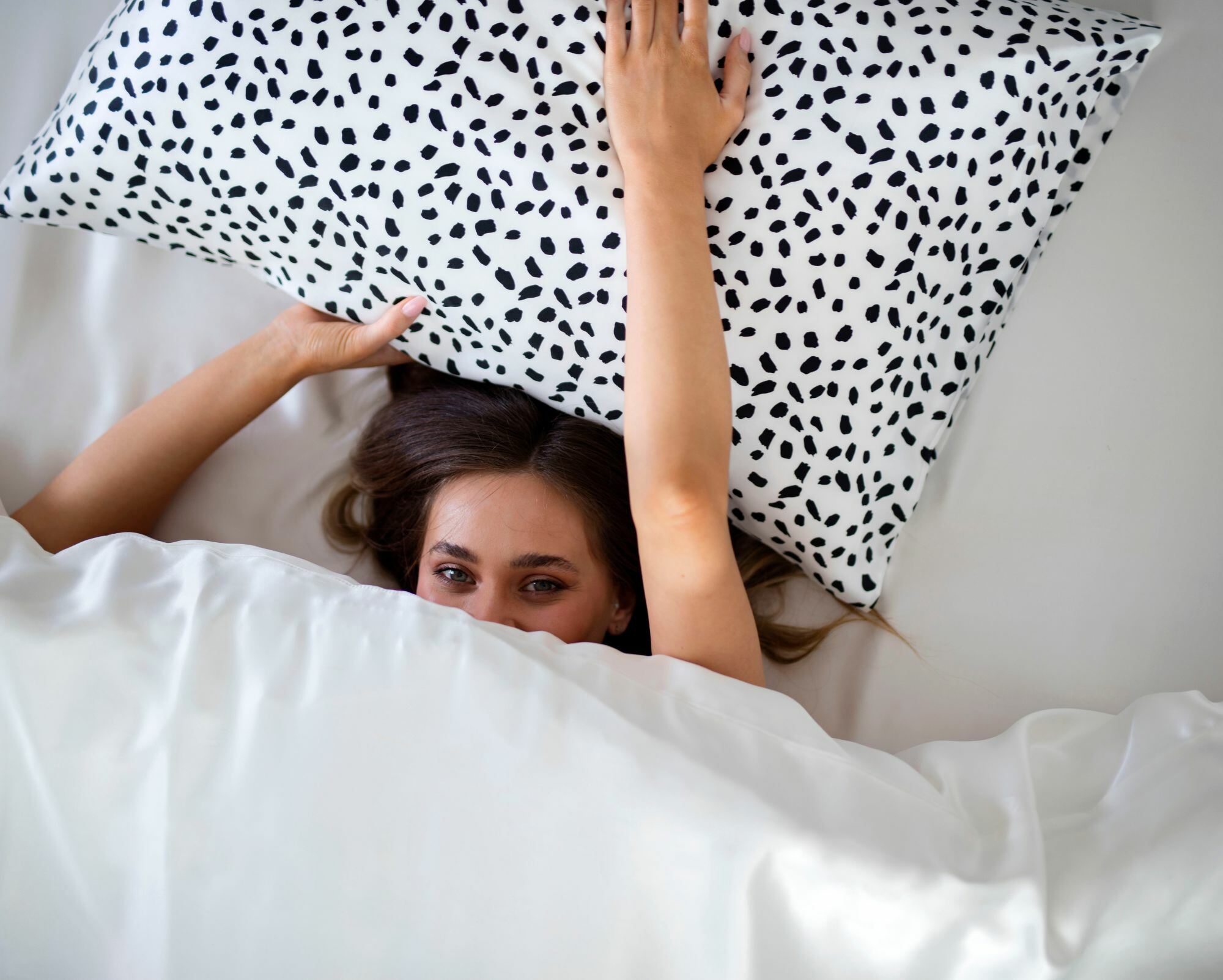
Final Thoughts
While your pillow can cause wrinkles, opting for a pillowcase made from gentle materials, like silk, satin, sateen and bamboo can reduce the appearance of fine lines and wrinkles. Don't forget to stay away from pillowcase materials like flannel, polyester, low thread count cotton, linen, and blends. These abrasive materials can cause significant friction and damage to your skin.
Additionally, incorporating new sleep habits, like sleeping on your back and investing in a silk eye mask, can significantly decrease the likelihood of sleep lines and wrinkles.

